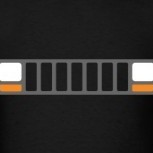
malutukilo
Member-
Posts
32 -
Joined
-
Last visited
Recent Profile Visitors
955 profile views
malutukilo's Achievements

Chariot Bug (2/9)
-
throwback to shaw smacking a recruit, and recruit rolling a 100 against shaw
-
*A handwritten note on a large piece of paper is attached to the bulletin board* YOU! YES, YOU! HAVE YOU EVER WANTED TO BE THE BEST AT BLOWING? HAVE YOU ALWAYS DREAMT OF BEING RECOGNIZED FOR GIVING THE BEST BLOWS? DO YOU WANT TO BLOW THE MOST EFFICIENT WAY? THAT'S GREAT! COME JOIN US AT OUR GLASS WORKING AND BLOWING WORKSHOP HOSTED BY ME, YOURS TRULY, FLORENS! YOU WILL LEARN HOW TO CRAFT THE MOST AMAZING GLASS FIGURES, FIGURINES AND OTHER OBJECTS! YES, YOU CAN MAKE GLASS DICKS! IF YOU ARE INTERESTED, WRITE YOUR NAME DOWN BELOW. YOU CAN CONTACT ME OVER PDA OR FEDNET ANYTIME FOR QUESTIONS! THIS WORKSHOP HAS BEEN APPROVED BY SSGT. CAFFREY. [ooc] you nicaraguan's better give me ic answers pls
-
only if you provide erp logs
-
you too now can taste the space cancer with Camacho's SuperDuperSpaceCoffeeMaker™
-
Researcher: 2LT. Salvatore Camacho Specimen Code: PR-0016 Summary: Recent findings suggest that Progenitor biological system works in cooperation with electromechanical implants, found throughout the body. This cooperation includes maintaining systems ranging from immune system to establishing a "Hive mind-like" structure, making it possible for Progenitors to communicate over great distances. Experiments performed in the last month has opened up more fields for research, which include studying of what other tasks these implants are responsible for. When compared to an animal system -including human race- of the Milky Way Galaxy, Progenitor systems has shown to possess analogues of components which help create, maintain and regulate cells and tissues. After a focused enzymological analysis, it was found that Progenitors are endowed with a variety of enzymes that work beyond survival. In this study, we defined some of the enzymes that are responsible for these beyond-survival tasks. Falling under those tasks is transmitting signals to Progenitor technology for the user. 1. Implants It was established that implants are abundant in a Progenitor body. These implants, while not recognized as a foreign matter to the body of a Progenitor, in fact work in harmony with the biological sytems. Up until this study, it was known that the implants were responsible for: Creating cells, Regulating immune system, Communication with the hive, And tracking of the host. While the non-biological part was achieved by solely electronical, it was found that biological tasks are completed with the help of synthesis of regulatory enzymes by the implants. What was discovered next is the enzymes that have no analogues whatsoever. After a comparison with nearly two hundred species of the Milk Way through Federal Gene Database™, these enzymes have proven to be unique and present in every Progenitor Thrall specimen. Disabling the synthesis of these enzymes and/or isolating them from a Progenitor cell or tissue created no negative results for the survival. Under many conditions, the cells and the tissues kept propagating and regenerating in the 72-hour culture period. This has led us to believe that these regulatory enzymes have other objectives rather than keeping the cells/tissues alive. This also suggests, given the nature of Progenitor Biology, that these enzymes are engineered to be synthesized via implants. 2. Enzymes The enzymes come in various types, which suggests that each of them have a unique tasks. The common feature found in all these enzymes is the origin, the Progenitor Genetic Material (PGM). It appears that through a mechanism that feeds PGM into to implants, makes the implants forcefully synthesize corresponding enzyme. Each enzyme and their PGM counterpart include an array of percentage of Progenitor and human genetic material. After a thorough study, it was discovered that these enzymes are responsible for enabling the host to Progenitor technology. It is worth noting that since each eznyme is unique in its own way of originating from a percentage of PGM and DNA, under right conditions some of the technology used by Progenitors CAN be accessible to humans. Two of these enzymes have been defined as: Progenitor Teleportation Regulatory Enzyme (PTRE) - higher percentage of DNA compatibility. Progenitor Weaponry Regulatory Enzyme (PWRE) - higher percentage of PGM compatibility. 3. Conclusion Progenitors utilise a wide array of implants for various tasks ranging from immune defence to communication. This study has shown that the implants and the enzymes that synthesize are also responsible for enabling the Progenitor technology to the host. If bioengineered, these implants can also shrinked to nano from micro and synthesize regulatory enzymes that are more compatible to humans, which could enable us to access Progenitor Technology. Hopefully, this advanced technology will soon be useful in our endeavours.
-
IC: Combat Engineer Detachment Application of Interest Name: Serq Amenhotep Physical Age:21 Race:Egyptian Gender: Male Eye Color: Hazel Hair Color: Dark Brown Height: 172 cm. Weight: 58 kg. Employment & Background Current Rank:Rct. Educational History: Highschool, El-Ezher University Criminal Record: N/A Employment History: Internship at local communications firm, 1 year in local car dealership as technician. Service Record: 2298, Completed Bootcamp, transferred to GRANT as Recruit. OOC: Character's College Explanation: 2 years of electrics/electronics, basically eligible for technician level. Server Time: Almost errday for 4~hours. Roleplay History: Been doing it for more than 5 years. Been an admin and an engineering lead on different servers (Both SSTRP). Additional note : Not any.
-
didn't even let him use a safe word
-
Jason "INCOMING!, shit my bind" Marsh
-
Report Info: Researcher: 2LT. Salvatore Camacho Specimen Code: PR-0015 Experiments Performed: 1. Cellular Inspection 2. Genetic Material Extraction, Isolation and Mass Spectrometry 3. Immune System Modelling and Analysis 4. Progenitor Tissue and Cell interactions with human and Arachnoid samples 5. Bioengineering of simple Progenitor Genetic Material Experimental Details: 1. Cellular Inspection After a through scanning under light, laser and electron microscopy it was found that Progenitor Thrall tissue cells share common features of animal cells of the Milky Way. The cells include a nucleus-like sheath for their genetic material PGM (Progenitor Genetic Material), an equivalent of mitochondira, and such organelles as animal cell organelles to keep the cell functioning. An inter and intracellular look however shows us that along with Progenitor cells, tissues and cells themselves contain a wide range of contaminants. These contaminants range from bacteria to virii and even fungi. Along with living cells--brand new ones even, there's an unbelieveable amount of necrotic cells and tissue in a functioning body of a Progenitor Thrall. PGM, at a first look, looks similiar to human DNA in shape and structure. However, closer inspection shows otherwise. 2. Genetic Material Extraction, Isolation and Mass Spectrometry While the extraction and isolation process is harder than of an animal cell's, process has proved us that the immune system of a Progenitor Cell is not resistant to the process. Along with this, the PGM proved confidently stable during extraction. PGM is similiar in structure yet VERY dissimilar in everything else to our DNA. While it's synthesized as a helical double string, the building blocks differ from ours. PGM is responsible for almost the same functions as DNA. Encoding and regulation of proteins and other structural molecules. The similarities and differences between PGM and DNA may prove us useful in crafting countermeasures. 3. Immune System Modelling and Analysis Immune System in a biological sense is simply absent in the cells and tissues of the Progenitor. Further scans show us that the "defence" against foreign matter in a Progenitor body is provided solely by electromechanical parts--implants. 4. Progenitor Tissue and Cell interactions with human and Arachnoid samples After different periods of times, PGM and Progenitor cells along with tissues have been forced to interact with both human and Arachnoid cell and tissue samples. As a result, all of the human and Arachnoid samples have died off toxicity. 5. Bioengineering of simple Progenitor Genetic Material After the isolation of the PGM, a simple bioengineering process of; Base Codon Exon and introns appeared to be fairly easy. This information will help us reverse-engineer some cell features and possibly craft tools that will increase our chances against the Progenitors.
-
hey, scientific research reports with IC format where do we post 'em, do we even post them at all?
-
[GONE WRONG] [IN THE HOOD] [COPS CALLED]






